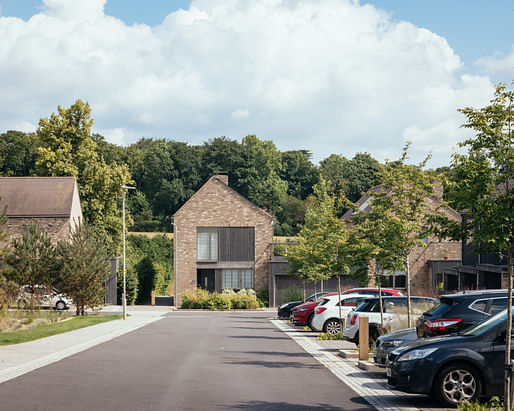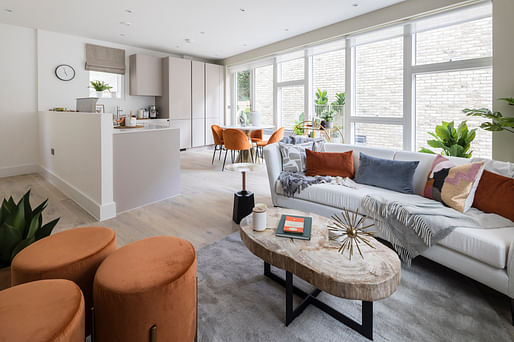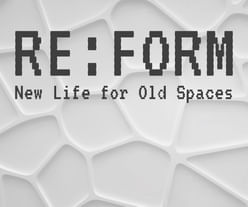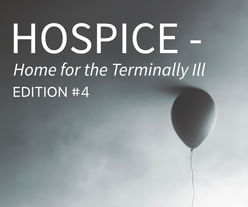
In unison with this morning’s Stirling and Stephen Lawrence Prize shortlist announcements, the Royal Institute of British Architects (RIBA) has also shared the new group of shortlisted candidate projects for this year’s Neave Brown Award for Housing, recognizing deserving contributions in the important area of affordable housing schemes from around the UK.
Only three projects made the cut for the competition’s third edition, providing a total of 133 units of housing across two regions (RIBA South and RIBA London). Last year’s winner, a 26-unit riff on the country’s iconic back-to-back style terraced houses from Peter Barber Architects, enjoyed quite a bit of press adulation on its way to being named a RIBA London Award winner. One project, Henley Halebrown’s Hackney New Primary School and 333 Kingsland Road, was also named to the 2022 Stirling Prize shortlist this morning.
RIBA President Simon Alford commented: “High-rise, low-rise, urban, rural, existing, and new — these three schemes realize thoughtful, affordable housing within complex locations. Innovative and purposeful, they also enhance and enrich their neighboring spaces and communities. They set a benchmark — for clients, contractors, and architects — for better UK housing.”
The winner is to be announced in a ceremony held on October 13th at RIBA's 66 Portland Place headquarters in London. Scroll down to see more details on each of the three shortlisted projects.
Lovedon Fields by John Pardey Architects (Hampshire)

Jury comments: "There are many good basic ingredients in the mix -mixed tenure including 40% affordable dwellings and shared ownership; a mixture of apartments, terraces and detached houses, including some lifetime homes; timber frame structure; and plenty of green public space.
"The overall layout is structured around a street and a triangular green and, combined with the variation of house types and a gently sloping site creates a good balance of order and informality, in contrast to some of the other developments nearby. Unusually, about two-thirds of the site is conceived as a wildflower meadow with integrated landscaping including mixed native hedging.
"In terms of individual house designs, external massing and composition are generally simple and unfussy without being stark, and the mixture of a reasonably lively buff/grey brick with both weathered and black-stained timber cladding is well-judged. Several house types incorporate balconies that address public spaces, and a successful feature on some of the houses is the wide timber-slatted garage that forms part of a continuous edge to the street, and at first floor provides a generous terrace that looks both ways, back onto the street at the front as well into the back garden and to open land beyond."
Kiln Place by Peter Barber Architects (London)

Jury comments: "Kiln Place is an architectural statement that successfully illustrates how local authorities can provide new high-density public housing that is sensitive and does not require the demolition of existing homes. The project provides 15 new homes (7 of which are social rent in perpetuity) for the London Borough of Camden.
"The homes are designed to high energy standards and use a ‘fabric first approach’ with high performing U-values for the building’s fabric along with low air permeability. New trees and planting, as well as increased access to the open space, significantly improve the biodiversity and accessibility of the estate.
"The homes themselves contain an intricate sequence of spaces to deal with the unusual site constraints, whilst setbacks and playful fenestration maximise internal daylight and create private roof terraces. The language of setbacks unifies the new architecture whilst creating shadow, scale and producing a pleasing rhythm along the streets. The buildings have soft corners, coloured window frames and highly articulated massing to create levity and personality which has a subtle humanising effect on the modernist-inspired estate architecture."
Hackney New Primary School and 333 Kingsland Road by Henley Halebrown (London)

Jury comments: "The project comprises a school enabled by a new housing block, both on a single, tight urban site. Its size clearly challenges educational and environmental norms, with the elimination of internal corridors forming an inner world of a closely knit courtyard and classrooms. It is clear the architects have had to be inventive to deliver required light and ventilation on this restricted school site and the courtyard is very much the heart of the school in the same way the hall was in the Victorian board school. Everything happens within this central space.
"The grateful residents of the apartment building appear to be thoroughly enjoying the penthouse qualities of their temporary homes, the wide vistas across East London and the very generous outside spaces sheltered by the robust, uncomplicated concrete logia structure that defines the building’s external appearance. These current residents are maximising the meanwhile benefit of living in the building while another development gets underway nearby. Eventually the units will be occupied as 100% affordable housing.
"The ten storeys are served by a central octagonal oculus staircase, a visual treat for those with a head for heights. When viewed from the tenth floor or basement, the impact is mesmerising, likea wormhole to another dimension. One hopes that it is enticing enough to tempt residents away from the lift on a day-to-day basis."

250,000 € Prize / HOUSE OF THE FUTURE 2024/25
Register by Wed, Apr 30, 2025
Submit by Mon, Jun 2, 2025

Re:Form – New Life for Old Spaces
Register by Wed, Jan 22, 2025
Submit by Tue, Sep 2, 2025

Ceramics of Italy Tile Competition
Register/Submit by Fri, Feb 14, 2025

Hospice - Home for Terminally Ill #4
Register by Wed, Jan 15, 2025
Submit by Mon, Jun 16, 2025
No Comments